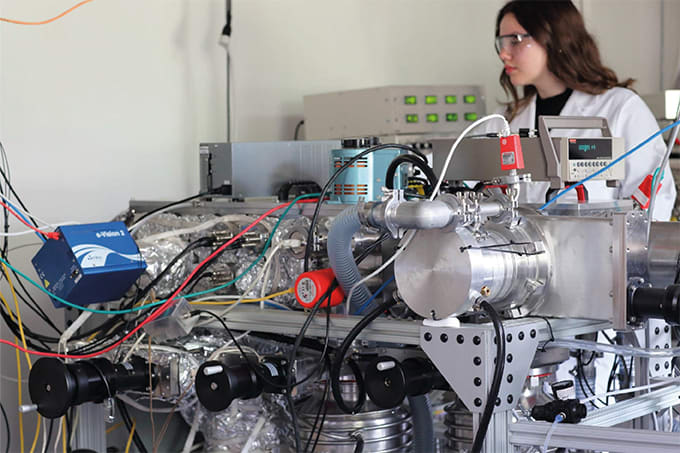Monoclonal antibodies are important therapeutic molecules. Increasingly, novel complex antibody formats are replacing classical monoclonal antibodies. To ensure product integrity and product quality, a well-controlled manufacturing process and thorough analytical characterization are required. Continuous process automation, Quality by Design (QbD) studies, and Design of Experiments (DoE) approaches to understand the relationship between critical process parameters and product quality increase the number of samples that need to be processed.
Conventional analytical methods, such as capillary electrophoresis (CE-SDS), capillary zone electrophoresis (CZE) or ion exchange chromatography (IEC) are very precise and reproducible but, unfortunately, have only a low sample throughput. Therefore, there is clearly a need for new high-throughput analytical technologies to handle the increasing number of samples.
We think that microchip capillary electrophoresis (MCE) is a good solution as it offers a high-throughput approach for monitoring antibody quality. In our laboratories, we have implemented the LabChip GXII system (Perkin Elmer), which enables automated analysis of 96 to 384 samples in one run. The system provides three different assays for the analysis of proteins: Microchip CE-SDS (MCE-SDS), Microchip CZE (MCZE), and glycan analysis. In this article, we focus on the MCE-SDS assay. From our point of view, the MCE-SDS assay offers several advantages compared to our conventional CE-SDS. Our CE-SDS method uses a ~30 cm capillary to separate the antibody samples, which leads to an analysis time of about 30 minutes per sample. With MCE-SDS, samples are analyzed in a separation channel of only 14 mm in length. Thus, one sample can be analyzed in only 40 seconds (about 45 times faster than CE-SDS). Because of the short separation channel on the microchip, we can assume a decrease in the resolution. Surprisingly, for some antibody features – especially in the low molecular weight range – MCE-SDS shows a resolution that is superior to CE-SDS.
With MCE-SDS, the antibodies are labeled with a fluorescent dye and detected using laser-induced fluorescence. The proteins can be stained directly in the capillary using a non-covalent labeling mechanism: the dye, which is provided in the gel matrix, binds to both protein-SDS complexes and SDS-micelles. To reduce the background signal from labeled SDS-micelles, there is a de-staining step at the end of the separation channel. The big advantage of the non-covalent labeling is that the sample preparation is not only quick and easy but also compatible with a variety of different buffers. Only harvested cell culture fluids require a buffer exchange step during sample preparation. Moreover, the sample preparation can be automated on different robotic platforms, further reducing the analyst’s hands-on time. As regards the general system handling, our experience is that the LabChip GXII shows a lower failure rate than the CE-SDS systems and requires less experienced staff. However, with the high sample throughput, data analysis is a bottleneck – even the best automatic integration algorithms cannot replace the manual review of every analyzed sample. We have implemented the MCE-SDS assay to support our upstream processing (USP) and downstream processing (DSP) departments during process development. Here, we monitor product purity, product-related impurities, in-process controls, as well as product stability. However, our main goal is to use the MCE-SDS assay for GMP (good manufacturing practice) lot release testing. The assay still has some drawbacks compared to CE-SDS in relation to sensitivity and reproducibility, but, together with Perkin Elmer, we are optimizing the assay for use in quality control (QC). By moving the assay to the QC environment, we will prevent any method offset by having the same method for process development, in process testing, process characterization/process validation (PC/PV) studies, critical quality attribute (CQA) assessments and lot release testing at the same time. In summary, MCE-SDS is a high-throughput assay for monitoring and characterizing classical and novel formats of antibody-based biotherapeutics. And though it is currently used for non-GMP samples only, we think that it has the potential to become a QC assay in the future.




